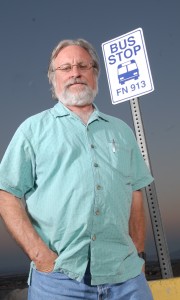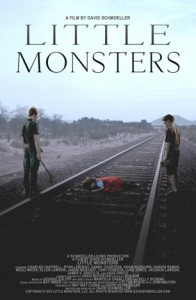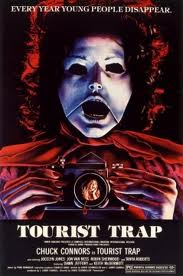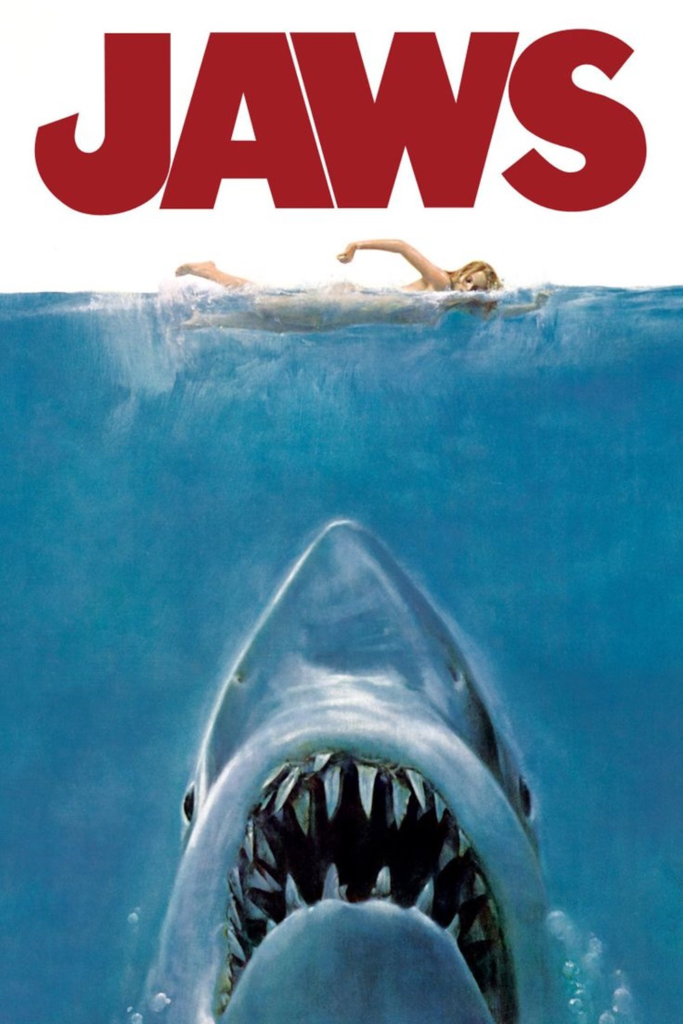 David Schmoeller is the director of such horror classics such as “Tourist Trap”, “Crawlspace” and “Puppet Master”. David has a new film coming out in 2013 that is a different type of horror film called “Little Monsters”. Media Mikes had some time to chat with David about his new film and also reflecting on his horror classics.
David Schmoeller is the director of such horror classics such as “Tourist Trap”, “Crawlspace” and “Puppet Master”. David has a new film coming out in 2013 that is a different type of horror film called “Little Monsters”. Media Mikes had some time to chat with David about his new film and also reflecting on his horror classics.
Mike Gencarelli: You are known for your work with monsters but tell us about how your new film “Little Monsters”, tells the story of a different kind of monster?
David Schmoeller: The horrible crimes of patricide or matricide or any of the cidas (fili, frati, parri) are familiar and fascinating subjects of literature and cinema. But the crime of children killing children, in this case, two ten-year olds killing a three-year old – for no reason at all – and then being released at eighteen with new identities, seemed to me to be a fresh and challenging subject for a movie. The opening of the film – the first four shots of the movie, actually – are difficult to watch, but I thought it important to set the stakes as high as possible: we don’t see the murder itself, but the immediate aftermath, the horrible results of a senseless murder. Because of the unusual subject matter, the only way “Little Monsters” would ever get made is if I financed it myself. So, I did. I’m glad I made this movie. I hope it is appreciated.
MG: Where did you come up with the idea for the film?
DS: “Little Monsters” is very loosely inspired by the circumstances of a real murder case, the Bulger murder in England in 1993. In that case, there was so much outrage when the murderers were given new identities and released when they turned 18, that the government passed laws that it was illegal to reveal their identities. So, we know very little about what happened after they were released. I just thought it would be interesting to write a story that speculated what would happen to child murderers if they were adults – and released.
MG: Tell us about your role of Wakefield?
DS: It’s just a funny cameo I played – a silent bit as the retired cop that Carl lives with. It really started during the Empire International days when we shot our films in Rome, Italy. We could only take a handful of American actors because of the cost – and we would pick up the rest of the actors in Rome. So, the directors – and producers – would sometimes cast themselves in small roles – basically because we could speak English (with no accent). I’m not an actor – but I have been in half-a-dozen movies – but, it has to be a really small part – little or no dialogue. We actually shot the scene with sound – with me actually telling this really corny jokes…and I am so dead-panned, Charles and the crew were cracking up. I’ll put the scene in the DVD extras…it’s so bad it’s really funny.
MG: How can you reflect on creating some of horror most beloved films like “Tourist Trap”?
DS: It’s always rewarding when your work from so many years ago grows in appreciation. So, that makes “Tourist Trap” particularly rewarding – since it was my first film – and my oldest. And in the beginning, it wasn’t immediately appreciated. It had what was then called a “regional” release. The distributor struck 50-100 prints and it went from region to region. There wasn’t much advertising. It was a different time. The film was released onto the world – and the world yawned. It wasn’t until a few yeas after it’s theatrical release that Tourist Trap starting playing on TV and slowly began to make some impact – which came, I think, primarily because it was mis-rated by the MPAA. Instead of the usual R rating that horror films need – and generally receive – “Tourist Trap” was rated PG (or PG-13) or whatever the milder rating was. What that meant was that “Tourist Trap” could play on Saturday afternoon TV. And parents across the country were telling their kids – “I have to do the laundry, go watch TV.” And across the country, seven years olds went into the living room and started watching this crazy movie with screaming mannequins with gaping mouths and baby blue eyes – and it scared them to death. And then they would tell their friends and interest in Tourist Trap began to grow. Earlier this year, Jonathan Rigby released his book: “Studies in Terror, Landmarks of the Horror Cinema and Tourist Trap was one of 130 landmark horror films from the beginning of film to present day. In the year 1978, three films were listed: “Halloween”, “Cronenberg’s The Brood”, and “Tourist Trap”. Pretty good company, I was given a Lifetime Achievement Award at the Fantaspoa Film Festival in Porto Alegre, Brazil earlier this year. And they screened most of my films. It was very rewarding that every screening was sold out – and that most of the people were YOUNG people –  and the screenings were subtitled in Portuguese. “Tourist Trap” (and “Crawlspace”) still screen in 35MM in art houses across the US – even though the prints are starting to fade. [David Schmoeller starts the New Year with a guest appearance at the famous Alamo Drafthouse Cinema in Austin where a 35MM print of TOURIST TRAP will screen at 10pm on January 1, 2013. Check it out here]
and the screenings were subtitled in Portuguese. “Tourist Trap” (and “Crawlspace”) still screen in 35MM in art houses across the US – even though the prints are starting to fade. [David Schmoeller starts the New Year with a guest appearance at the famous Alamo Drafthouse Cinema in Austin where a 35MM print of TOURIST TRAP will screen at 10pm on January 1, 2013. Check it out here]
MG: And how about “Puppet Master”?
DS: “Puppet Master” is a slightly different story. Again, I am happy to make a film that is remembered – or still around for whatever reason. I wrote and directed the first “Puppet Master” – and created some of the puppets. The face of Blade was actually our homage to Klaus Kinski – if you look closely enough. But the concept and original story came from Charlie Band. And the franchise is due almost completely by Charlie. I’ll take all the credit people want to give me for that film…but be aware that it really pisses Charlie Band off when they do. That is why he took my “A Film By” credit off – and put his name – ABOVE THE TITLE – on the new Blu-ray versions of Puppet Master. It is now: “Charles Bands’ Puppet Master” – the classic first film. Charlie is getting insecure in his old age.
MG: How do you feel that horror genre has changed over the years?
DS: The changes in the horror film really reflect the changes in the film business itself: lot’s of remakes and sequels and cannibalizing the past. I suspect the more original horror films today come from foreign countries and – in the US – from indie filmmakers. To make a truly original horror film today, a filmmaker would have to figure out the zeitgeist (global financial worries & problems – not exactly an exciting topic for a horror film) –or whatever – it would have to be something we really haven’t seen or experience – and that would never receive real financing, because it won’t have been tested. Tough times for films…


